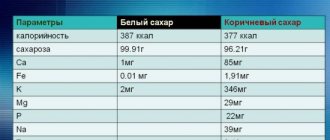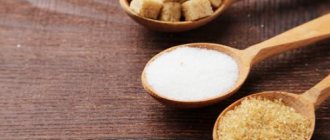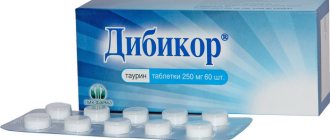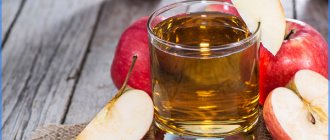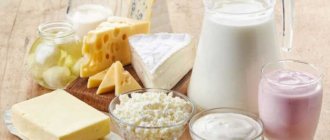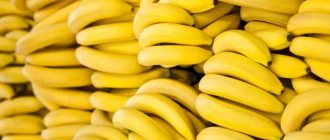The presence of brown cane sugar on store shelves will surprise few people; many have heard about the extraordinary properties of the product. Adherents of a healthy diet often insist that the product is low-calorie, while gourmets prefer to prepare sweets by replacing beet extract with cane extract. What is the calorie content of cane sugar and is there any point in switching to it from “regular” sugar? We'll tell you in this article.
What is the difference between cane sugar and regular sugar?
Unlike beetroot, cane contains 20 times more potassium, 10 times more iron and as much as 85 times more calcium. The composition also contains magnesium, which is necessary for the body, which is not present at all in beets, and the amount of copper is almost the same as in oysters!
Cane sugar contains B vitamins, which improve metabolism and ensure the normal functioning of the entire body.
The difference is noticeable even in culinary terms. Cane sugar has the taste and color of caramel, which true gourmets appreciate. Dishes acquire a refined and delicate caramel flavor and aroma. They especially highlight the taste of drinks and sauces.
The brown color is due to the presence of molasses (black molasses), which is a source of useful microelements and even proteins. The darker the color, the more molasses it contains and the more beneficial the properties. In this regard, black cane sugar is especially popular.
Both varieties have almost the same energy value (about 400 kcal), however, the beet variety loses to the cane variety, which supplies unique beneficial substances. The latter, among other things, refers to slow carbohydrates and does not cause significant harm: in this case it is impossible to gain weight or get an overdose of glucose.
How many calories are in flour? Wheat flour
Flour is a food product obtained from cereal grains by grinding. Flour is produced from grains of various crops, most often wheat. There is also rye, oat, buckwheat, corn, pea, and barley flour. The latter varieties can be found not so often.
When making flour, the grain is first peeled from the shell and then ground. The central part of the grain contains carbohydrates. Gluten is the protein component of flour. Flour is a universal product that allows you to diversify the human diet and has wonderful capabilities for preparing delicious food. It is present in every home as a necessary product.
Wheat flour is made from wheat grains, one of the most common cereal plants. Wheat flour is a powdery product with different grain sizes, white in color with shades of yellow or gray, depending on the degree of grinding. Wheat flour has a pleasant bready aroma, almost no taste.

Calorie content of wheat flour
The calorie content of wheat flour is 342 kcal per 100 grams of product.
Composition and beneficial properties of wheat flour
Wheat flour contains dietary fiber, which is most abundant in wholemeal and whole grain flour. Fiber helps normalize digestive processes and gently cleanse the walls of the intestines and stomach from waste and toxins. The product is carbohydrate, and can contain both simple carbohydrates (high-grade flour) and complex carbohydrates (whole grain). Wheat flour is rich in B vitamins, which are responsible for the functioning of the nervous system and improve the condition of the skin, hair and nails (calorizator). The product also contains minerals: potassium, magnesium, zinc, necessary for the normal functioning of the body.
Harm of wheat flour
Wheat flour contains gluten, so people with gluten intolerance need to replace wheat flour with gluten-free analogues. Wheat flour is a high-calorie product, excessive consumption of which can lead to gaining extra pounds.
Types and varieties of wheat flour
According to the degree of grinding, the following types of wheat flour are distinguished:
- Coarse - flour is made from whole grains, including bran and cell membranes, the flour particles are quite large, and contain dietary fiber;
- Fine grinding - flour is produced only from the internal endosperm, the flour particles are small, the composition contains starch and gluten, and there is practically no fiber.
By grade, flour is divided into:
- Krupchatka - small grains, produced from the endosperm of grains of special varieties of wheat, have a light cream color and high baking properties. Used for making rich pastries, Easter cakes, etc.
- The highest grade is very small white endosperm particles (powder), used in the production of baked goods and as a thickener in sauces;
- The first grade is small, finely ground particles, white with a yellowish tint, suitable for savory baking, preparing dough for noodles, dumplings and dumplings, sautéing, used mainly in the production of bread products;
- Second grade - particles of the grain shell are added to the endosperm particles, coarse flour with whiter larger particles of white color with a grayish or yellowish tint. Table varieties of white bread and savory pastries, gingerbreads, and cookies are baked from this flour;
- Wallpaper - consists of crushed grain, including the bran shell. The particles are large, heterogeneous in size, and contain the most protein and vitamins. It is used for the production of table varieties of bread that do not go stale for a long time.
For more information about flour, see
Selection and storage of wheat flour
Depending on the goals and needs, different types of flour are chosen, but the selection rules are similar - the flour should flow freely, have no lumps, musty or moldy smell. Wheat flour should be stored in tightly closed glass or ceramic containers in a cool place, according to the expiration date indicated on the package.
Wheat flour in cooking
At home, wheat flour is most often used, it is used to prepare rich pastries, pies, cakes, pancakes and pancakes, dough for dumplings, dumplings and pasta, flour is used as a breading for fish, meat and poultry, added to sauces, julienne, passivation.
Copying this article in whole or in part is prohibited.
Which sugar is sweeter: cane or beet sugar?
It is believed that cane sugar is sweeter than beet sugar. However, according to GOST, any sweetener produced in factories consists almost entirely of sucrose, which determines the degree of sweetness.
Apart from the differences in the content of useful components, the composition of both options is the same. The only difference is the area of their contact with the taste buds. Cane sweetener crystals are larger in size, which makes it taste sweeter when you put it in your mouth. But if you dissolve it in tea or coffee, the degree of sweetness will be the same as regular one.
The nutritional value
Cane sugar is a net source of carbohydrates, and contains four calories per gram, or 16 calories in one teaspoon (four grams). Isolated sugar contains no other nutrients other than calories and carbohydrates ().
Below are the nutritional values for a 30-gram serving of cane sugar (about two tablespoons):
- Calories : 105 kcal
- Sugar : 30 grams
- Carbohydrates : 30 grams
- Protein : 0 grams
- Fat : 0 grams
- Fiber : 0 grams
Types of cane sugar
In order to choose cane sugar, you need to know the manufacturing process and the differences between the varieties of this source of carbohydrates.
Based on the manufacturing principle, they are distinguished:
- Refined (white), that is, it has undergone a refining procedure: turning into syrup, filtration, evaporation and drying.
- Unrefined (brown), that is, practically unrefined. This is the type that is most often consumed, because the benefits of unrefined cane sugar are explained by the high content of molasses.
Types of Brown Sugar:
- Muscovado sugar: has a distinct caramel aroma, honey color and slightly moist, sticky medium-sized crystals, native to South America and Mauritius.
- Demerara sugar: has hard and sticky crystals of golden shades, grows in South America and is called the Demerara River, as it began to come to the world market from this area.
- Black cane (Soft molasses sugar): contains a large amount of molasses and is very dark in color, has the softest and stickiest crystals, and a rich cane flavor and aroma.
- Turbinado sugar: Turbinado sugar: turbine or centrifuge processed with water and steam to remove impurities and contaminants, has dry, large crystals ranging from honey to brown in color and comes primarily from Hawaii.
- Gur: a special type that came from India, is condensed sugarcane juice, which is squeezed out very slowly and retains its beneficial properties; in color and consistency it is similar to soft sherbet.
We recommend reading: The benefits of rye (black) bread
Use in cooking
In cooking, cane sugar is valued for its ability to add rich taste and aroma to dishes. Most often, a sweet product is added to baked goods and confectionery products: muffins, cakes, pancakes, cookies, waffles, cakes, pancakes, biscuits. It goes well with fruits and berries, so it is used in the preparation of preserves, jams, compotes and fruit drinks. It is used to add a sweet taste to tea, coffee and even main dishes: soups, salads and sauces.
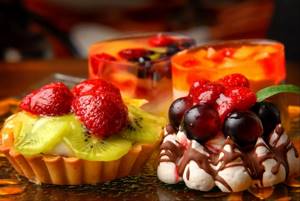
Composition and calorie content of cane sugar
This type of sugar is an excellent calorizer that will not cause much harm to your figure. It contains a significant proportion of microelements and vitamins with valuable properties. In terms of the content of calcium, magnesium, iron, phosphorus and zinc, it surpasses all similar products, so its benefits cannot be overestimated. For example, in Western countries, dark sugar is used by vegetarians as a source of iron and magnesium.
Energy value:
- proteins ≈ 0.70 g;
- fats – 0 g;
- carbohydrates ≈ 96 g.
Cane sugar contains slightly fewer calories than regular sugar. The calorie content of one hundred grams is 377–398 kcal.
Harm to health
Sugar is harmful to health when consumed in excess. In this case, it contributes to increased body weight, an increased risk of developing atherosclerosis, diabetes, heart disease and cancer. Its use is not recommended for people with individual intolerance to the product.
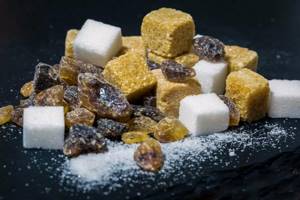
Benefits of Brown Cane Sugar
Dark cane sweetener supplies carbohydrates that are necessary for the synthesis of special hormones, without which most biological processes cannot proceed normally. In addition to carbohydrates, it supplies the body with B vitamins and a host of important microelements that bring enormous health benefits. In total, it contains about two hundred useful substances, thanks to the properties of which:
- the brain and nervous system function better;
- blood pressure is normalized;
- bones and joints are strengthened;
- metabolism improves and is regulated;
- strength and energy appear;
- toxins are removed from tissues;
- digestion improves;
- the work of the liver and spleen is stimulated;
- the functioning of the cardiovascular system is stabilized.
Among other things, cane sugar can also be consumed in moderation when losing weight, since the beneficial components included in the composition are transformed into energy without turning into fatty compounds. Thus, it can be included in the menu of any diet and sports nutrition. Another plus: it does not cause allergic reactions, so cane sugar will definitely not harm even children. But if the child has any diseases, you must first consult a doctor.
a brief description of
The advantage of cane sugar is that during the creation process it can be minimally processed and retains all the beneficial microelements contained in the plant.
What does it look like?
Cane sugar has the form of small crystals covered with a thin layer of syrupy molasses. Many people cannot figure out what color cane sugar is in its original form. Directly after synthesis from reed it is brown. Next, the raw materials are purified, and as a result, three types of sugar are obtained:
- refined - white crystals that have undergone complete purification;
- unrefined – has a brownish tint;
- brown – original unrefined.
The taste of cane sugar is so rich in various shades that it is often compared to honey. It has a bright, sweet caramel taste and an unusually pleasant aroma. After the first acquaintance with the product, questions about the differences between regular and this type of sugar will forever disappear.
Is there any benefit to refined cane sugar?
Many people believe that refined sugar is produced using chemicals, but this is not true. The process uses only water and special raw materials.
In terms of calorie content and sucrose content, refined and unrefined cane sugar practically do not differ from each other (maximum by 10 kcal). The main difference is only in the content of useful elements, which are much less in the refined version due to processing. However, a small part of them remains.
Important! It is better not to consume cane products that come from Southeast Asia and have not undergone the refining process, since in these countries they control pests with the help of special poisons, which then remain in the product.
Industrial production
The beginning of industrial production of sugar from sugar cane is also associated with India. In the 16th century, Indians began to obtain so much sugar from the juice of cane stalks that the Indian kingdoms were able to provide them with all of Asia and Europe. Subsequently, the East India Company began to produce and sell sugar from cane. In our country, the first plant for the production of refined sugar from imported raw sugar appeared only at the beginning of the 18th century.
Currently, India remains one of the leading suppliers of brown sugar, second only to Brazil (342 thousand tons and 734 thousand tons, respectively). Also in the top five are China, Thailand and Pakistan. Among the supplying companies, the leading positions are occupied by Acugar Guarani, Copersucar SA and the USJ group.
Features of sugar consumption
If you completely stop eating sweets, blood circulation will be disrupted, and at the same time the normal functioning of most body systems. This means that sugar must be in the diet. It is only important to choose the right type of cane sweetener and follow the dosage.
Daily consumption rate
An adequate dosage per day is approximately 45 grams. In this case, no diet will be disrupted. You can consume up to six tablespoons of this substance per day, so you don’t have to give up sweets.
Is it possible to have cane sugar for diabetes?
In mild stages of diabetes, it is allowed to consume a small amount of sweets, which are prescribed by a doctor. In general, this amounts to about 5% of your daily carbohydrate intake. It is necessary to be careful about the volume consumed and take into account the composition when dosing drugs that lower blood sugar levels. At the same time, you can include only high-quality varieties in your diet and be able to distinguish them from harmful counterfeits.
For type 1 and type 2 diabetes, it is better to avoid consuming this product, since the glycemic index of cane sugar is quite high and amounts to 55 units. This increases glucose levels and the proportion of carbohydrates in the body. In such cases, it is better to give preference to sweeteners.
We recommend reading: Corn silk: benefits and harms, instructions for use
Cane sugar for pancreatitis
If inflammatory processes occur in the digestive organs, you should be careful about consuming any sweets and monitor the dosage in moderation. For pancreatitis, doctors recommend adding just one teaspoon of cane sugar to drinks, but it is better to avoid the treat altogether during the illness.
Cane sugar during pregnancy and breastfeeding
During pregnancy, it is recommended to replace regular sugar with cane sugar, as it contains elements necessary for mother and child and is well absorbed. In addition, it can improve lactation and the taste of milk, help cope with insomnia and promote rapid recovery after childbirth and the production of the happiness hormone. However, the calorie content here is no lower than usual, which means you should reduce your consumption to three spoons a day, because pregnant and lactating women are prone to obesity.
How many kcal are in honey? Which honey contains more calories?
Many people have heard about the benefits, amazing healing, rejuvenating properties of this sweet delicacy, but not everyone is aware of how best to use it so as not to be disappointed by excess weight.
Those who monitor their health and beauty, count calories, organize a proper diet, are interested in how many calories are in honey. The main components are glucose and fructose. Their share is 80% of the total mass, but the composition depends on the following:
- varieties;
- processing process;
- consistency;
- honey plants;
- storage conditions.
Light varieties are less nutritious than dark varieties. The calorie content of light varieties of honey is 380, and dark varieties are 415 kcal. There is an average value for those who cannot determine on their own what type the delicacy belongs to. It is 327 kcal per 100 g. and comparable to wheat bread, condensed milk, lamb meat or veal liver.
For ease of use, let’s calculate how many calories are in a spoon of honey. The calculation is made based on the average energy value of 327/100 g. for complete cutlery. One tablespoon is equal to 10 grams. product, which means its energy value will be 32 kcal (327/100*10).
Let's find out how many calories are in a teaspoon of honey. It holds 8 grams. nectar. Accordingly, at 8 gr. accounts for 26 kcal (327/100*8). If the product is heaped, then the indicators will be higher: a heaped tablespoon - about 70 kcal. The calorie content of honey in a heaped teaspoon is 32 kcal.
Let's look at examples of nutritional value per 100 grams. some common varieties of honey:
- Buckwheat. The lowest calorie type, which has a reddish-brown tint and a stringy viscous consistency, is 301 kcal. This dessert quickly crystallizes, while the nutritional value increases, with 1 tbsp. l. will already be equal to 108.
- Lime. Has a light yellowish tint. The sweetest, most valuable, tasty and popular, has 320 kilocalories.
- Acacia. The color varies from golden to colorless, depending on what plant it is collected from: yellow or white. It is liquid in consistency, does not take a long time to sugar, and contains 335 kilocalories. It contains carotene, which has a good effect on digestion and reduces the risk of allergic reactions. Due to these characteristics, it is included in the diet of children, as well as diabetics.
- Heather. It has a bitter taste, a peculiar aftertaste, does not crystallize for a long time, which distinguishes it from other varieties, and contains 2% protein of the total volume. For 100 gr. accounts for 309 kilocalories.
- Walnut. Sometimes nuts are added to dessert: almonds, hazelnuts, nougat, walnuts, peanuts, sesame. The energy value of such a product increases and ranges from 400 to 500 kilocalories.
- Artificial. This type is cheaper and less useful. The calorie content of honey made artificially is significantly lower than that of a natural product, but contains a large amount of complex, hard-to-digest carbohydrates.
- Honeycomb. They are not much different from liquid nectar; they have 327 kilocalories.
Cane sugar scrub for beautiful skin
Brown sugar is the best option for making scrubs. It has a delicate effect on the skin surface, and the pleasant caramel aroma can relax.
Scrubs with the addition of this component have a lot of useful properties.
- Normalizes skin fat metabolism.
- Eliminates peeling.
- Moisturize.
- Cleanses pores.
- Fight cellulite.
- Rejuvenate and smooth.
- Removes toxins.
- Evens out complexion.
- Dead cells are removed.
- Used for massage.
- Gives shine.
- Suitable for use before shaving to prevent ingrown hairs.
- Makes the skin more soft.
- Absorb excess fat.
- Maintains the natural balance of the skin.
In addition to the described component, the scrub consists of a base (honey, oil, cream) and a couple of drops of essential oil (optional), which give the product additional beneficial properties.
Cane Sugar Scrub Recipes
- Mix 3 tbsp. l. olive oil, 1 tbsp. l. vanilla extract and vitamin E, 2 tsp. natural honey and 2 tbsp. l. cane sweetener.
- Mix 2 tbsp. l. white and brown sugar, 1 tbsp. l. sea salt, 1/3 cup baby oil.
- Mix cane sugar and honey in a 1:1 ratio, add a little lemon juice.
Advice! Before applying the scrub, you should steam your skin. Then massage it with the resulting product for 10 minutes, rinse with warm water and apply cream.
How many calories are in salt
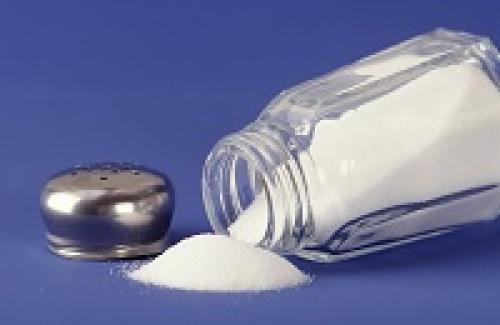
Salt is perhaps the only product that does not contain calories. At the same time, the benefits of salt are quite great:
- Without salt, our body simply cannot exist. It is found in tears, blood and sweat. In addition, the body does not “know how” to synthesize sodium on its own, which means that moderate salt consumption is simply necessary for life;
There are 0 calories in 100 grams of salt.
- Salt is one of the most sought after spices that adds flavor to foods and dishes.
Experts recommend using sea salt, as it is produced through the natural evaporation of water, without adding chemical elements. This means that nutrients and microelements are preserved in salt.
How to distinguish real cane sugar from fake
Counterfeits are increasingly appearing in stores. Manufacturers add caramel to regular refined sugar to turn it brown and sell it at the price of natural cane sugar.
It is important to learn to recognize a fake. To do this, you need to take into account several nuances:
- The packaging should be marked “unrefined.”
- Manufacturers of this product can only be the USA, Mauritius and South American countries.
- Due to the different sizes of crystals, this substance cannot be in the form of perfectly smooth sand or cubes.
Ways to recognize a quality product:
- Drop a little iodine into sweetened water. If the liquid turns blue, then the product being tested is real.
- Dissolve sugar in water. If it turns brownish, then it is a fake.
How to store?
Cane sugar should be stored in accordance with established standards and terms. This information is always indicated on the packaging and has general principles and parameters.
Conditions
After purchasing, it is better to immediately transfer the sugar into an airtight container. A clean, dry sugar bowl or any other container is perfect for this. It should be stored at room temperature in the absence of moisture and sudden temperature changes.
You should not place sugar next to other odorous products, as it quickly absorbs foreign odors.
Term
The shelf life of cane sugar according to GOST is 8 years, so under the right conditions it does not lose its taste for a long time.
To prevent rapid crystallization of sugar upon contact with air, you can put a piece of bread or tangerine peel at the bottom of the sugar bowl.

Harm of cane sugar and contraindications
In some cases, cane sugar can be not only beneficial, but also harmful to health. This is due to the fairly high calorie content. If you consume sweets in large quantities, the risk of diseases such as diabetes, cancer and atherosclerosis increases, as well as diseases of the pancreas, which cannot process as much. In addition, sweets cause tooth decay.
Advice! Those with a sweet tooth who cannot refuse this pleasant taste are recommended to consume fruits and dried fruits, high-quality honey and natural cane juice.
Unusual uses
Most of all, the average buyer is interested in how cane sugar differs from regular sugar. It turns out, practically nothing, if we are talking about a refined product. Apart from the slight difference between cane sugar and traditional sugar in terms of sucrose content and origin, these are two almost identical products with a minimal content of nutrients.
But if we are talking about raw sugar, then there are a lot of differences: from the appearance (the color of raw cane sugar is brown, and the structure is more viscous), to a whole list of useful properties, which will be discussed below. To be fair, it should be said that beet sugar is not produced in its raw form, so comparison can only be made with refined sugar common on the market.
Sugar can be used for more than just improving the taste of drinks and baked goods. In Sweden, for example, it is used as a unique spice. Everyone's favorite liver pate and pickled herring are prepared by Swedish chefs using cane sugar. It is also added to various sauces, soups and cold dishes.
In cosmetology, the properties of cane sugar for moisturizing, cleansing and whitening the skin are known. For example, you can prepare a face mask that has an instant effect. To do this, you will need a few tablespoons of fresh milk, a couple of drops of olive oil, and 1-2 tablespoons of unrefined sugar. By applying the finished composition to the skin and leaving it for 5 minutes, you will be surprised to discover how the skin will become more beautiful and silky.
Natural brown sugar is a unique product, the properties of which science is just beginning to reveal. Therefore, replacing the traditional beetroot sweetener with it is the only correct solution that will fill the body with rare vitamins and minerals.

In fact, there is a difference between these types of sugar, but it is not as significant as it might initially seem. Because, for example, the number of calories in both places is almost the same.
Brown sugar has 377 calories, while regular refined sugar has 387 calories.
Real cane sugar does contain some beneficial microelements, but they are very small.
In addition, a significant part of the brown sugar sold in our country is the same white sugar, simply tinted with caramel. The number of fakes is very high!
Moreover, not only tinted sugar from beets, but also from cane, ordinary refined cane sugar, can be a counterfeit.
Daily consumption rate
Whatever the numbers say about the chemical composition and benefits of the cane product, none of the types of sugar can be considered a source of vitamins and minerals. For example, the daily requirement for calcium for an adult is 800-1200 mg, 100 g of brown sweetness of this mineral is 85 mg. To compensate for the mineral deficiency, you will have to eat deadly doses of the product.
It doesn’t matter whether a person prefers refined sugar or gur, you can’t eat more than 50 g of it per day. The WHO continually calls for reducing the amount of sugary foods on menus to curb the rise in the number of people with diabetes. The optimal daily dose is 25-30 g.

When you can and cannot use it
Sugar can and should be consumed in reasonable quantities, as it is a source of calories. Breaking down into simple carbohydrates, it nourishes the brain and muscles, helps to be active, think quickly, and concentrate. It is preferable to eat sweet dishes in the first half of the day, as well as within an hour after training, then carbohydrates will not create problems for either your health or your figure.

It is necessary to limit the consumption of sweets in the following conditions:
- diabetes, hereditary predisposition to it;
- obesity, overweight;
- pancreatitis and pathologies of the pancreas;
- pregnancy;
- breast-feeding.
A contraindication to the use of gur is also an allergy to it.
A little history
Russian consumers learned about cane sugar back in the 90s, when it was imported to us from Cuba, and it cost less than our regular beet sugar. His homeland is India. Alexander the Great brought it to Europe. In the Middle Ages, sugar was sold in pharmacies. Peter the Great opened the Sugar Chamber in Rus' in the 18th century. The world produces 60% of cane sugar and 40% of regular sugar.

Rules of consumption
The consumption rules are as follows:
- Not suitable for making candy. The molasses only gets in the way here; in addition, the brown color of the sugar does not allow you to visually assess the readiness of the caramel.
- Molasses contains acids, they react with baking soda, so you must strictly adhere to the proportions indicated in the recipe.
- If you want to modify regular cane sugar, you need to take an equal amount. The only exception is very dark sugar, and you should use more of it. 100 gr. replaces the usual 120 gr. dark.
- Molasses slows down the crystallization process in the finished product, so baked goods don't go bad for longer.
How much can you eat per day?
An adult should consume no more than 60 grams.
There is no concrete answer as to how much sugar you can consume per day without sacrificing your health.
According to the advice of experts at Global Health Company, the amount of regular carbohydrates consumed with sugar does not exceed 10% of your daily calorie intake.
Many cardiology researchers recommend limiting this amount to 5%. In Russia there is more precise advice according to which consumption for an adult should be limited to 50-60 grams. For people who lead a sedentary lifestyle, this amount should be reduced.
There are a number of diseases for which the use of pure sugar is generally prohibited. It should be borne in mind that all sugar that enters the human body with food, that is, that which is added to various foods and drinks, falls within these permissible 50-60 g.
For diabetes
In diabetes, at least some sugars, including cane sugar, are limited. You can consume carbohydrates with the permission of your endocrinologist.
In case of diabetes, the risk of obesity and cardiovascular diseases is increased, so it is better to replace sugar with honey rich in fructose rather than sucrose or use sweeteners. The severity of restrictions depends on the severity of the disease. Therefore, in any case, it is better to consult a doctor.
Breast-feeding
There is no need to completely give up sugar while breastfeeding. But sweets should not be overused.

A small amount of sugar helps new mothers cope with stress, maintain lactation and improve their mood. But if the mother consumes sweets in large quantities, the baby may experience colic.
For pancreatitis
Is it possible to eat with pancreatitis? Sugar of any kind is prohibited during illness. When the body receives sugar, the pancreas begins to function in an enhanced mode, and during inflammation this is very harmful.
Sugar can be consumed in very moderate quantities during remission. The norm is determined individually.
